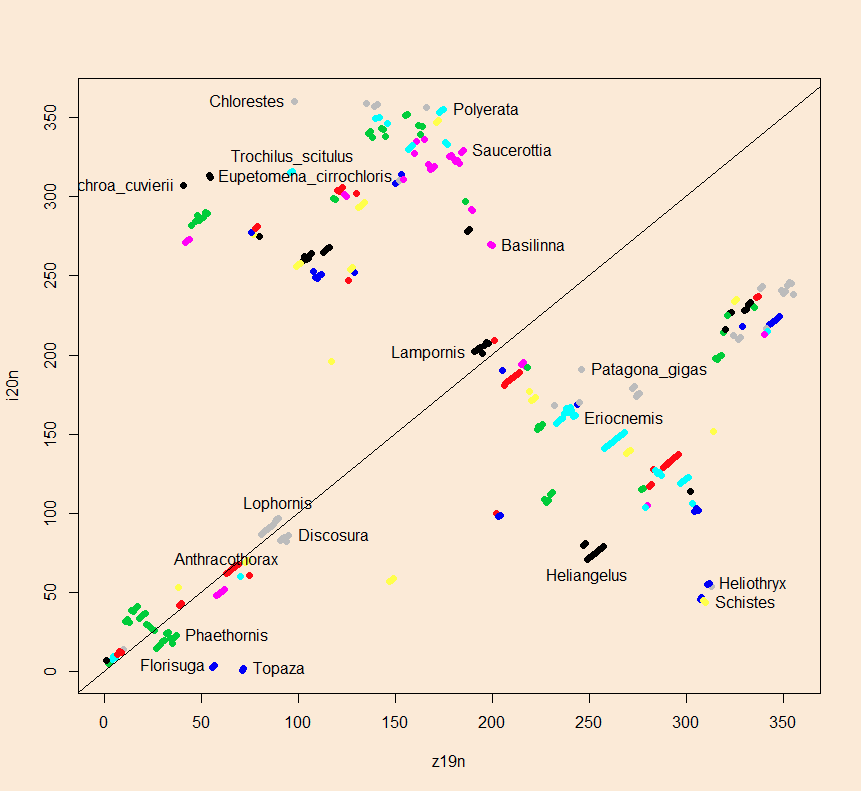
I labelled various genera/point-groupings.
For each species an x,y pair is created with the x - the sequence number of the taxon in the earlier world bird checklist (labelled “z19n”); the y value is the sequence number in later version 10.2 (“i20n”).
Obviously if no changes in sequence occurred the points would lie along the diagonal identity line.
Each genus has a single color – the colors are assigned by an algorithm in the plotting routine and there are so many genera that the color list is cycled through multiple times. Each genus has a single color, but the colors are not unique to a particular genus.

I labelled various genera/point-groupings.
Points, or clusters of points that moved earlier in the sequence are below the identity line, those that moved later in sequence are above.
If a genus cluster maintains largely the same within-genus sequence but is moved within the Trochilidae, it will be a diagonal group of points parallel to the identity line but moved above or below it. In this group this is a common pattern. An example is Heliangelus.
In contrast the genus Phaethornis has changed mostly by reordering the species sequence.
In contrast, this similar plot shows the change across 9 years (2009-2018) for the generally accepted sequence of Tyrannidae.

In this case the only substantial change was moving Calyptura cristata from the Cotingidae to the Tyrranidae.
We can, I believe, expect extensive revisions soon in this group.
A more interesting comparison is with the recent and substantial revision of the Thraupidae.
This plot shows the sequence change between IOC 10.1 and IOC 10.2.
Alan P. Peterson, M.D., POB 1999, Walla Walla, WA 99362-0999, Last updated 2020.09.23